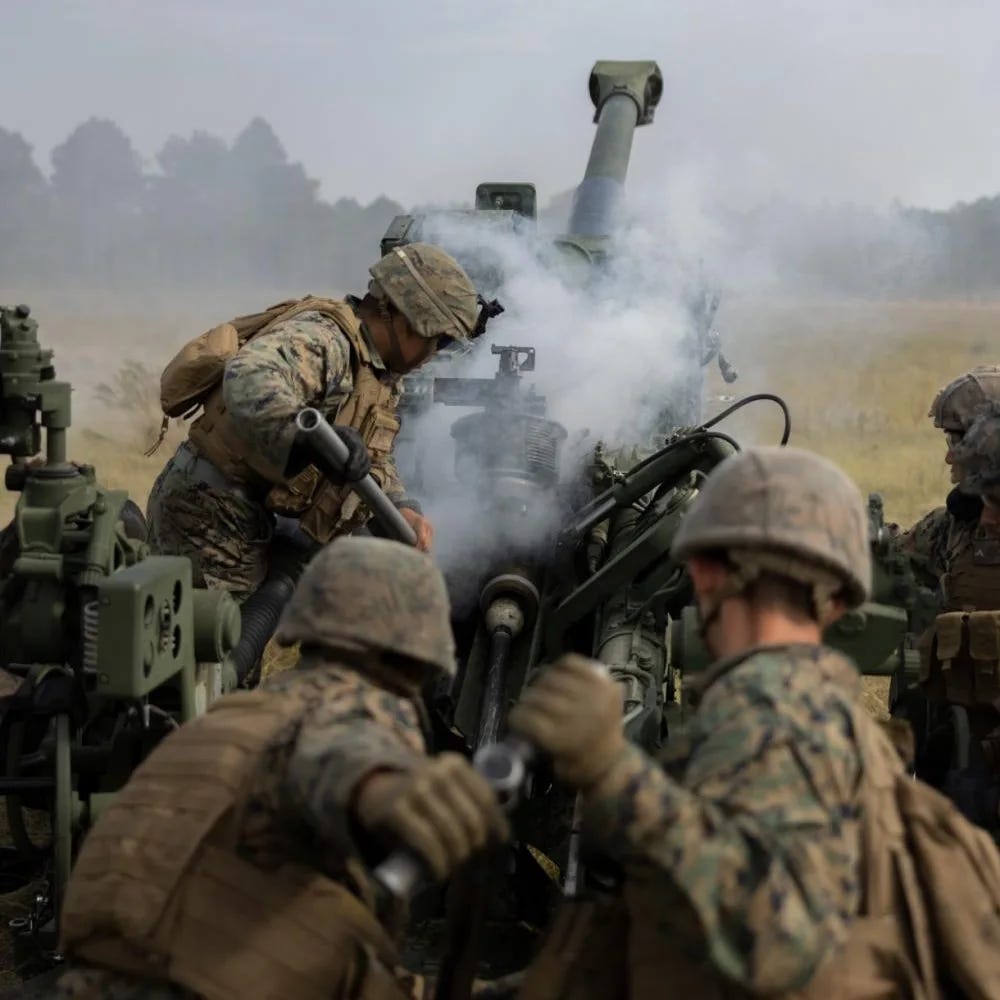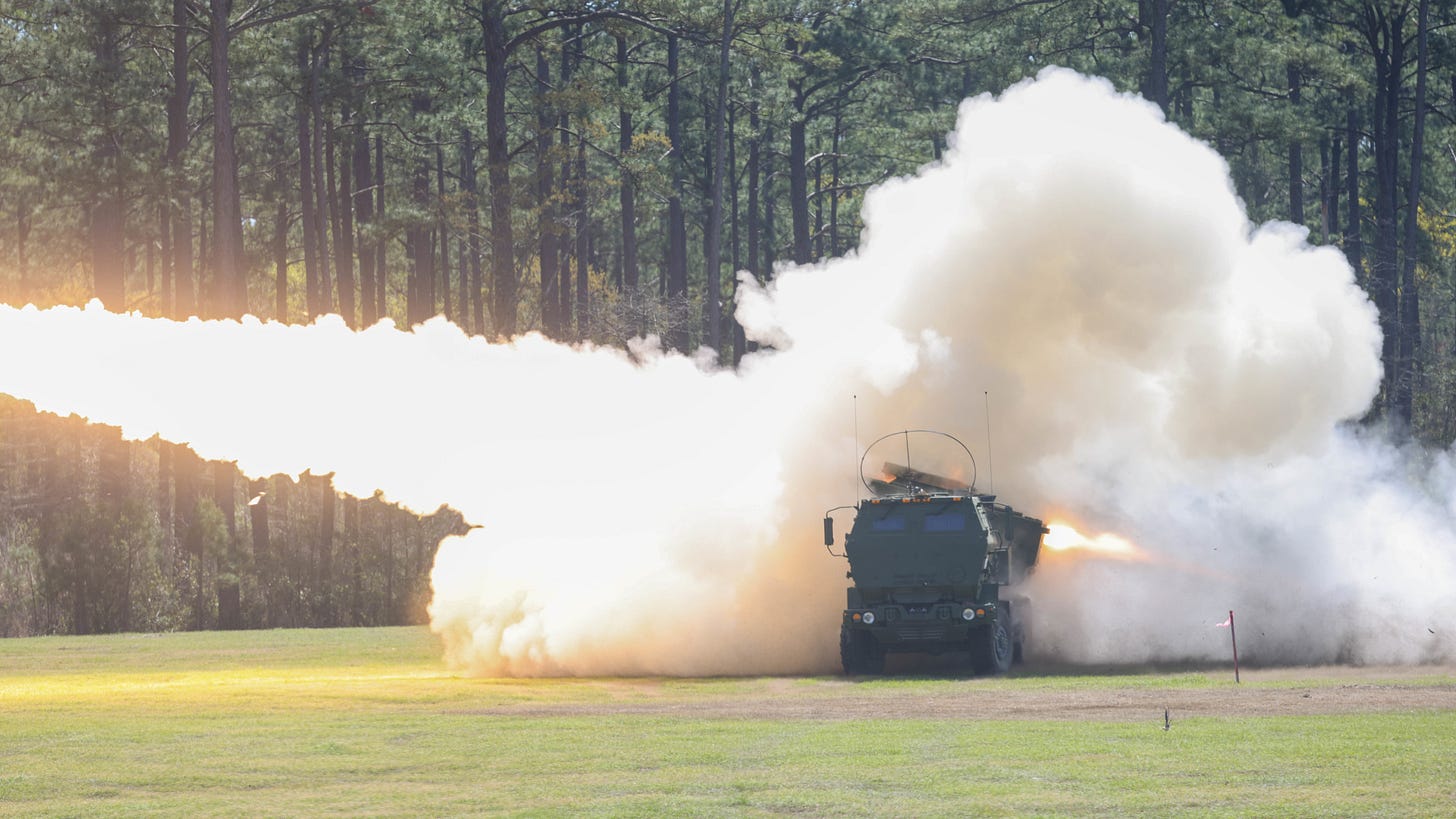First, an important note. I was a highly imperfect commander. Whenever people reflect on their past in writing, it can come off as sanctimonious and trite. That is not my intent. Rather, I hope that anyone who reads this can start off on the shoulders of my mistakes.
My experience
Click here to skip this section if you are uninterested. None of the following sections will reference it without explanation. It is a necessary “appeal to accomplishment” that I write only because it is customary in this sort of article and may provide insight to some readers.
I have spent a cumulative 39 months in Battery Command, either acting or serving. I’ve served as Battery Commander under four Battalion Commanders and four O-6 (Colonel) Commanders. I’ve had as many as 274 service members under my command and as few as 50. I have commanded rocket artillery, cannon artillery, radars, and a headquarters unit. As such, I felt writing this series of letters was prudent for future and aspiring Battery Commanders.
I started acting as Battery Commander at the age of 27 at Headquarters Battery, 5th Battalion, 10th Marines. I was not supposed to take full command, but I did so when some personnel changes made it necessary (I was the B-team). I took Command on April 4th, 2018, and kept it until I left the unit in July 2018. I acted or served as Headquarters Battery Commander for five months.
In September 2021, I took command of Battery S, 2nd Battalion, 10th Marines. The Battery with a 5th battalion moniker had not existed since deactivating in 2012, and I would be the first to assume command since. It was to be a rocket artillery battery (later called a medium missile battery) with the M142 High Mobility Artillery Rocket System (HIMARS) as its centerpiece. When I “took the guidon,” the battery had less than 60 people, some radios, and some trucks (no HIMARS launchers). We received the first launcher and immediately began training to gain full operational capability. Upon certifying our first fully operationally capable platoon, we had an abrupt change in mission.
Battery S was to be a composite artillery battery with howitzers, rocket artillery launchers, and counterbattery radar. We joined a combined-arms unit called a Marine Expeditionary Unit (MEU) to deploy overseas. So the battery formed anew, working through challenges of training, materiel, and personnel. Greatest of all was the ever-difficult challenge of change. Our forming was officially complete with the passing of a combat readiness evaluation nearly one year after I first took command.
We officially joined the MEU shortly after. Thus followed a grueling pre-deployment training program typical of MEUs. Despite many challenges and a year and a half of high-tempo training, the Marines and Sailors succeeded. We then deployed overseas, conducting exercises across Europe and planning crisis response options in the Middle East. We split our battery across Combatant Commands, creating significant challenges for command and control while allowing flexibility in the battery's employment. We returned after 8 months, and I relinquished command after 977 days with Battery S.
Important questions every Commander must answer
I was lucky enough to experience the gambit. A headquarters battery, a rocket battery, and a composite rocket-cannon battery with organic radars. As time passed, I asked myself many questions. Below are the most important ones.
What are the expectations of your senior commander, of your peers, and of your subordinates?
You must answer to a higher authority than your own. This is a cold reality check for some and an obvious, banal claim for others. The nature of command is such that you will always have a senior commander. Everything you do must support them. Such is the nature of command. If their expectations are unclear, you owe it to those under your charge to seek clarity. The continuity of command depends on it.
Your relationship with your peers matters as well. Together with your adjacent commanders and the staff that support, you build the battalion. Build consensus on tackling your challenges and provide a united front on as many matters as possible.
Ask your subordinates about their expectations of you. These will likely be based on their experiences with former commanders, good or bad. However, this insight can be invaluable to generating your subordinates’ buy-in to your plans or vision. It can also give you the tough reality check you need from time to time.
What is your vision?
Defining a vision can be very difficult. Start with a mission statement. Normally, these are given to us by doctrine, policy, or higher headquarters. I built mine unique to the composite battery but kept it based on doctrine.
From there, identify and clearly define the essential tasks to achieving that mission. Again, many of these are typically given by outside sources. The US has Training and Readiness Manuals and Mission Essential Task Lists. However, minimum standards should rarely be the end-all-be-all. Do not omit basic standards, but if a task or qualifier is missing, add it. These tasks should deeply consider the possible battlefield scenarios where your battery may be employed, the adversary it might face, and the emerging threats of modern warfare.
Lastly, create an endstate. You will never achieve perfection, but you should imagine it. What characteristics do you want your unit to exhibit? How do these characteristics relate to your mission, and how do your essential tasks get you there?
How do you intend to accomplish your vision?
Conceptual plans and vague orders demanding excellence are not enough to effectively command. Battery Commanders have a limited cadre of experienced officers under their charge. As such, Battery Commanders cannot disavow themselves of the details. You must have a plan to guide your unit in accomplishing your vision. How you create it is entirely up to you.
Typically, the most experienced people are the senior enlisted leaders of the battery. Convincing them of the value of your vision is the most important step to its accomplishment. They are the ones who train the mass of the battery and have the most intimate interactions with the Marines or soldiers.
How do you evaluate tactics?
You will learn how to manage maintenance and personnel readiness. Higher headquarters always closely monitor these matters, and metrics will be thoroughly defined for you as they should be. The chief intangible metric will always be tactical proficiency.
Training and readiness standards will tell you how fast your unit can conduct a certain battle drill, lay the battery, or process and execute a fire mission. This is a good start, but the minute a thinking, acting enemy enters the scenario, the game changes.
The entire existence of a professional military organization, especially an artillery battery, is based on the presence of a possible adversary. Yet, in training, simulating that enemy can be difficult. Battery commanders must educate themselves in modern warfare and possess a deep understanding of potential adversaries. The commander's imagination, built from diligent study of modern battles, best facilitates effective scenarios. Deciding what enemy you are fighting is the first step to evaluating tactics.
It is okay to over-imagine scenarios, but you must provide clarity as the commander. The clarity lies in this: the best units have subordinates who can read the context of the battlefield and make informed decisions on survivability, lethality, and logistics. A Section Chief who understands the air and ground threat and the ebb and flow of fires will know when to hide their section and when to ready it for rapid displacement. A Platoon Sergeant who knows when and where to flow ammunition via cache sites or large hubs and how that affects fires or survivability will feed the battery's firing capability more effectively. Artillerists on the modern battlefield must be able to read the context of orders and intelligence updates to make decisions and act on them effectively. In short, units that can properly execute a battle drill on time are okay, but units that know which ones to choose and when to do so are excellent.
Who do you command through?
Every commander must decide who they command through. Commanding through someone comes in three forms: solving problems with them, giving orders to them, and receiving feedback from them. Some prefer to seek input from and solve problems with their staff, come to a decision, and disseminate those decisions or intent to subordinate commanders. Some prefer to solve problems with their subordinate commanders and then task their staff to support them. Others might even command through smaller units, such as an Infantry Company Commander commanding through squad leaders or a Battalion Commander commanding through platoon leaders. Increasingly common in the information age is the attempt to command through everyone: “fast, flat communication.”
Who you command through depends on many things. It depends on the temporary task organization or your unit's permanent form. It depends on your tactical mission and the proximity of your force to you. It depends on the specific talents of your staff and subordinates alike.
Above all, consider the most effective method to accomplish the mission and maintain survivability, logistics, and communications. Second, consider the ability of your unit to survive your removal. If your command center is destroyed or meetings with higher headquarters simply suppress you, you must ensure your battery can act without you. Third, consider the development of your subordinates. As a commander, you owe it to your subordinate leaders to give and receive feedback and coach and mentor them into your vision. Be wary of choosing one sole method. If you solve problems solely with your staff or senior enlisted advisors, you may ostracise your subordinate commanders and vice-versa. If you only ever receive feedback from one group, you risk a singular narrative and the effects of group-think taking control of your unit.
These questions are just as important in an artillery battery as any command. Modern artillery tactics often require the rapid task organization of a unit, ever-changing support relationships, and wide dispersion of forces. How to command those forces must be thought out deliberately and constantly re-assessed.
How do you receive feedback?
This question has a double meaning. First, as mentioned above, consider what methods you have to receive feedback on your unit's progress. Your choices here will determine how often and how honest that feedback is.
Second, receive negative feedback with grace. Do not allow insubordination or anything that will compromise command, but do allow honest and constructive input from your subordinates. Remember that feeling in command is not the same as commanding. Many commanders allow their subordinates to placate their egos so that they feel in charge, but secretly, their subordinates follow orders half-heartedly or twist narratives to their favor. Receiving honest feedback from across your entire force is critical in discovering how your subordinates think and act, allowing you to employ them better.
What is trust, and to whom do you give it?
You must own every mistake your team makes. This is not because anyone expects you to have complete and unimpeded control of everything. That line of thinking drives many to micromanage and overcommit their mental abilities. Rather, it is because you are in command — you choose who does what, with what level of supervision, and with what safeguards. You decide not just who you trust but what exactly you trust them with and how far.
We have a much better understanding of what distrust feels like than we do what trust is. Trust is both relative and categorical. It is relative in the sense that there are levels of trust in different situations or relationships, and it falls along a wide spectrum. It is categorical in that you may trust someone’s character deeply, but you may not trust their skill, experience, or education level. This is often the case with junior officers, for example. They have been heavily vetted for their character and willingness to strive for excellence but require training and supervision. Every worthwhile subordinate wishes to be given complete autonomy over a problem or function, but every subordinate also needs guidance, coaching, or experience on problems and functions (this includes you as a subordinate to your senior commander).
Never give autonomy to those whose character you do not trust. Give autonomy to those with strong character. Protect them by safeguarding or supervising areas where they lack experience or education. Always coach and mentor. Coaching and mentorship differ from chastising and corrections, which are almost always negative. Frame your words like a coach does: “Next time you see x, do y.” This positive framing is more likely to gain favor and build trust between you and your subordinates.
Tensions Inherent to Command
Try to be beyond reproach, but do not act like you are beyond reproach.
Have high expectations, but be thankful for the process and achievements.
Set precedent, but do not be bound by it.
Balance benevolence and strictness carefully in your punishment and reward. Mentally prepare for moments where you will use your legal or disciplinary power to ensure that you make the right choice. You will need to find a middle ground between being overly benevolent and overly strict. It will not be easy, but the feeling of power will likely drive you too far to one side if you do not prepare for it.
Know that your words and actions have a great influence on people, but do not overstate your ability to change people.
The fox and the Hedgehog.
The Fox and the Hedgehog
I read John Lewis Gaddis’ On Grand Strategy much too late in my career. This is the most important lesson I could have had when I first took command:
Archilochus, an ancient Greek poet, once wrote, “the fox knows many things, but the hedgehog knows one big thing.” Xerxes, when deciding to cross the Hellespont into Greece, saw one big thing. He envisioned conquering the Western world and expanding his rule as a God-king. Artabanus, his advisor, knew many things. He saw the rough canalizing terrain, the sparse crops that couldn’t feed the army, the lack of a route to retreat, and the dangers that lie ahead for the Navy. Artabanus was sent back home to govern the domestic affairs of the Empire. Xerxes led his army to ruin. F. Scott Fitzgerald described first-class intelligence as the ability to have two completely opposing ideas and still maintain the ability to function. As a leader, you must be both the fox and the hedgehog. You must have a vision that acts as your compass. But you must also have a map, an understanding of context and circumstance that guides you around the obstacles that will come your way. Solve problems with both short-term and long-term solutions. Find the right timing to act and do not let others rush you to decision.
Imperative skills of a commander
To write and speak orders with clarity that cannot be misunderstood or misinterpreted.
To read, select, and employ in advantageous terrain and battlefield contexts.
To task-organize for efficiency and flexibility.
To maintain a vision and purpose while navigating everyday challenges (the fox and the hedgehog).
To read people and place them where they will thrive. Mix personalities for best effectiveness.
Inspire others to buy into your vision.
Some general principles
Always act in good faith.
Focus your team's education on tactics. You are the senior expert in this matter, and they need your insight to best accomplish your vision.
Listen to learn, learn to help, help to lead. I am forever indebted to LtCol Christopher Siekman for this one.
Always come with a plan, but be ready to adapt it.
Over-communicate! No one knows the good things your Marines do if you don’t tell people. No one can push support if they don’t know you need it.
It’s not the meeting that matters but the work put into it. But make sure your meetings are organized. Have an agenda, clear inputs, and clear outputs.
Battery leadership is tricky as you know. Don’t get so lost on the internal that you lose sight of where you’re driving the unit. Don’t get so focused on the external that you lose sight of your capabilities and limitations. Artillerymen do it all.
Find your team. As conventional forces, we have little influence on who we get on our team. But you can always find ways to identify and empower talent within your organization. This will make you effective.
Once given Command, your word is quite literally law in the United States. Learn those laws well.









